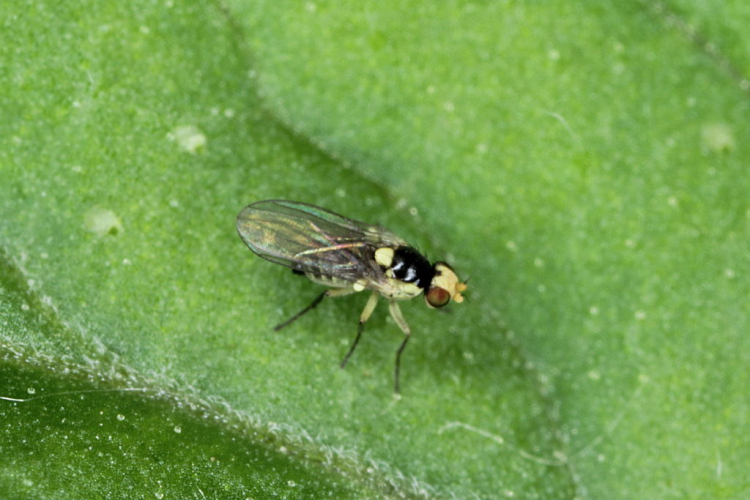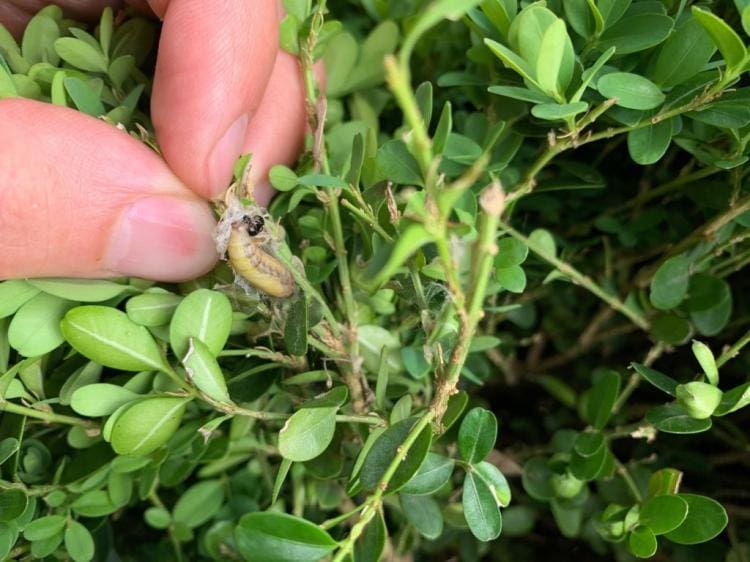Leaf Miners: Recognize Damage And Fight Successfully
Ornamental plants are particularly hard-hit by the pests. We show how to recognize the leaf miner, prevent it and fight it properly. The damage caused by leaf miners can be seen on the leaves of a wide variety of plants and is also a visual problem for many gardeners. Here you can find out everything about leaf miners that cause this damage and what you can do about them.
Leaf miners ( Agromyzidae ) belong to the sub-order of flies ( Brachycera ) and are very small flies. The larvae of leaf miners have a special way of eating through the infested leaves because they mine through the leaves. This is where the name of the leaf miner comes from. In the following, you will find out what is meant by mining.
Leaf miners: fact sheet
Table of Contents
The leaf miners are very small, dark-colored flies with a body size of two to three millimeters. The females have a saw-shaped ovipositor for laying eggs. The females use this ovipositor to lay their eggs in the plant tissue – the whitish-yellow larvae then hatch from it. The larvae are so-called leaf miners that feed on the leaves without damaging the outermost leaf skin – they eat mines in the leaf tissue, so to speak. Depending on the species, these feeding patterns differ and spiral, passage, space, or bubble mines can arise.
When the development of the larvae in the leaves after three larval stages is complete, they eat an exit hole from the leaf and thereby leave it. They then pupate in the ground or on the plants and complete their development. The development of a new generation takes about 25 days at a temperature of 20 ° C.
The adult leaf miners prick leaves and suck out the sap for their nourishment. These puncture points and the puncture points of the ovens are then entry points for bacteria and fungi, such as fusaria, and can thus cause further damage to the plants.

Common leaf miner species
In Germany alone, there are already 550 different species of leaf miners and around 3,000 species worldwide. In the following, we will introduce you to some of the best-known and most common leaf miners.
Tomato leaf miner (Liriomyza bryoniae)
The tomato leaf miner not only damages tomatoes ( Solanum Lycopersicum ), but also many other crops, but this leaf miner causes the most damage to tomatoes, lettuce ( Lactuca sativa ), and cucumbers ( Cucumis sativus ). This leaf miner can be found in North Africa, North Asia, and Europe. The adult leaf miners are black and yellow in color, the larvae are whitish to transparent and when the larvae get older, they get a yellow head. This leaf miner can be found both outdoors and in greenhouses.
You might so like: Box Tree Moth Recognizing: Signs And Pictures
Florida laminator fly ( liriomyza trifolii )
As its name suggests, this leaf miner is not native to Europe but was introduced from North America in the 1970s. The Florida laminator fly attacks many different ornamental and vegetable plants. The adult leaf miners are yellow-black in color and the larvae are ocher-yellow in color.
South American leaf miner (Liriomyza huidobrensis )
The South American leaf miner is also an introduced pest that originally comes from South and Central America. This leaf miner fly is also known as the leaf miner fly and was introduced to Europe in 1987 – it damages almost all vegetable crops. This leaf miner was spread worldwide through plant material and is particularly harmful to leafy vegetables. The larvae of the South American leaf miner are dirty white and transparent.

Pea leaf miner fly ( Phytomyza atricornis )
The adult pea leaf miners are black in color and prefer to lay their eggs in peas ( Pisum sativum ) and kidney beans ( Phaseolus vulgaris ). The larvae eat conspicuous leaf mines in the leaves, but the damage to the pea leaf miner is of little importance. Fighting the pea leaf miner is therefore usually not necessary.
Leek emanator fly ( Phytomyza gymnostoma )
This leaf miner looks particularly good on onions ( Allium cepa ) and leeks ( Allium porrum ). The winter leek is particularly likely to be attacked by the leaf miner and the larvae eat their way down towards the base of the leek. The mines can also burst and the base of the leek can be damaged by the larvae feeding. This can also lead to rot.
You might so like: Boxwood Moth: How To Identify It Safely
Onion leaf miner fly (Liriomyza nietzkei)
Onions are more damaged by the onion leaf miner than leeks. Here, too, the larvae eat mines in the plant tissue. This feeding activity causes the leaves to bend and begin to wither. The females of the onion leaf miner cause punctiform injuries to the young onion plants.
Recognizing leaf miners: symptoms and damage
Leaf miners often attack ornamental crops such as chrysanthemums ( Chrysanthemum ) or gerberas ( Gerbera ). The leafminer flies cause direct damage through the female piercing of the leaves and through the mines that the larvae eat into the leaf tissue. These corridors and leaves dry out, the leaves often fall off prematurely. Of course, the loss of leaves also reduces the yield of vegetable crops, as the assimilation area is smaller.

Secondary damage occurs when fungi and bacteria penetrate the leaves and thus the plant as a result of these injuries. In addition, some leafminers can also transmit viruses such as the tobacco mosaic virus or the English curl disease of the beet and thus damage the plants.
Prevent leaf miners
An infestation with leaf miners can be prevented with culture protection nets because these prevent the small pests from laying their eggs in the leaves. This requires close-meshed culture protection nets through which the small adult flies cannot pass to lay their eggs.
With the use of yellow boards, an infestation can be recognized at an early stage. Here you can find out more about the use of yellow boards and how to use them correctly.
Fight leaf miners
If there is a leaf miner infestation, it is time to think about combating the small flies and their voracious caterpillars. In the following, you will find out which options are available to you to control leaf miners.
You Might Also Like Batavia Lettuce
Combat leaf miners chemically
The chemical control of leaf miners can be done with insecticides that contain the active ingredient spinosad. This active ingredient is approved as a plant protection product in organic farming, but unfortunately, it is dangerous for bees and must therefore not be applied to flowering crops.
You can either sprinkle or spray insecticides with Spinosad. This remedy is not only suitable for combating leaf miners, but can also be used against thrips ( Thysanoptera ), Colorado beetles (Leptinotarsa decemlineata), or the cherry vinegar fly (Drosophila suzukii ).
Fight leaf miners biologically
An effective biological control method for leaf miners is the use of beneficial insects such as parasitic wasps (Dacnusa sibirica or Diglyphus isaea). The parasitic wasp Dacnusa sibirica parasitizes the first larval stages of the leaf miner by laying an egg in the larvae with its ovipositor. The parasitic wasp larvae hatch from this egg and feed on the leaf miner fly, which then dies. The parasitic wasp Diglyphus isea, on the other hand, paralyzes the leaf miner larva and then lays an egg next to the leaf miner. After the wasp hatches, this larva feeds on the anesthetized leaf miner larva. After pupation, useful parasitic wasps hatch again and go in search of new leaf miners.

In the case of a low infestation or at the beginning of the infestation with leaf miners, the simplest method of control is to remove the infected leaves, because these also contain the harmful larvae of the leaf miners. Do not put these leaves on the compost, but rather put the infected, plucked leaves in a plastic bag and dispose of them with the household waste.
Fight leaf miners with home remedies
An effective means of deterring the leaf miner flies is the use of nettle manure because the smell of the leaf miner frightens off. In addition, the liquid manure also strengthens your plants. For nettle manure, you only need water and nettles ( Urtica ), which you have to ferment in order to obtain effective plant protection and plant strengthening agent. Here you will find out how to make nettle manure and how to use it correctly.

Combating leafminer flies summary:
- The active ingredient spinosad is used for chemical control, but it poses a danger to bees, which is why we recommend an alternative control
- The biological control is most effective via beneficial insects such as parasitic wasps; If the infestation is lower, the affected leaves can simply be removed, which are then disposed of with household waste
- Nettle manure is ideal as a home remedy, as it also strengthens the affected plant






